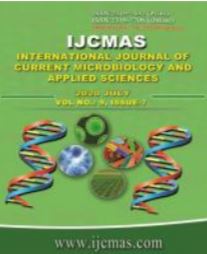


 National Academy of Agricultural Sciences (NAAS)
National Academy of Agricultural Sciences (NAAS)

|
PRINT ISSN : 2319-7692
Online ISSN : 2319-7706 Issues : 12 per year Publisher : Excellent Publishers Email : editorijcmas@gmail.com / submit@ijcmas.com Editor-in-chief: Dr.M.Prakash Index Copernicus ICV 2018: 95.39 NAAS RATING 2020: 5.38 |
A field experiment was conducted during kharif season of 2018 at District Seed Farm of Bidhan Chandra Krishi Viswavidyalaya, Kalyani, Nadia, and West Bengal, India on sandy clay loam soil having neutral in reaction with the objective of optimization of potassium fertilization for maize in new alluvial zone of West Bengal. The experiment was laid out in Randomized Block Design having four replications with six treatments (T) comprising different potassium levels as 0 (T1), 30 (T2), 60 (T3), 90 (T4), 120 (T5) and 150 (T6) kg K2O ha-1 with recommended dose of nitrogen and phosphorus (120:60 N: P2O5 kg ha-1). Application of 150 kg K2O ha-1 resulted in higher plant height (304.23 cm), LAI (6.71) grain yield (7.86 t/ha), stover yield (9.12 t/ha), net return (Rs. 59019.33/-) which were statistically at par with 120 kg K2O ha-1 treated plots and 90 kg K2O ha-1 treated plots. Highest B: C (2.11) ratio was observed in T5 treatment which was statistically at par with T6 treatment (2.10) and T4 treatment (2.04). The results showed that increase in all growth, yield, net return and B: C ratio of crop was more pronounced up to 90 kg K2O ha-1, but there was no significant increase in all growth, yield, net return and B: C ratio of crop when potash level was increased above 90 kg K2O ha-1. So, it could be concluded that application of 90 kg K2O ha-1 is the optimum level of potassium for maize to obtain higher yield and profitability.
 |
 |
 |
 |
 |